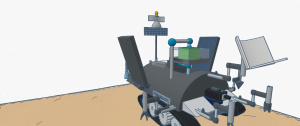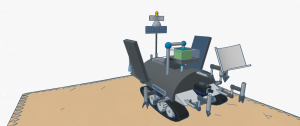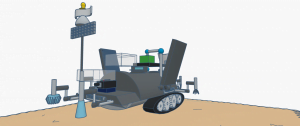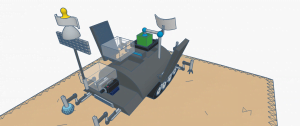Registrations are closed
In the future, to enable astronauts to stay on the Moon for long periods of time, new infrastructures must be developed to overcome important challenges. Such challenges include protection from radiation and meteorites, energy production, the extraction and recycling of water, food production and much more. The Moon Camp Challenge invites students to explore the Moon and decode some of the complexities future astronauts may face.
In Moon Camp Discovery each team’s mission is to 3D design only one component of a Moon Camp using Tinkercad. Teams can choose to design a:
– Lunar lander
– Moon Base
– Lunar rover
– Rocket
– Lunar Orbital Space Station
The design should be adapted to the Moon environment and if possible consider the use of local resources, provide protection and/or living and working facilities for the astronauts.
Moon Camp Discovery is a non-competitive mission for beginners. All teams that submit an entry that complies with the guidelines will receive a participation certificate and their project will be shared on the Moon Camp online platform.
Who can participate?
Participation is open worldwide to students aged up to 19 years old. Moon Camp Discovery is recommended for students aged 6 to 14 years old. Participating students must be supported by a teacher, educator or parent.
Discovery Projects Gallery 2020-2021
Below you can find some of the Moon Camp Discovery projects. For more projects visit the Moon Camp Discovery project gallery.
Team: Universe Lovers
Puławy Poland Category: Lunar rover
External link for Tinkercad 3D design
Moon Star is ideal for navigating the lunar surface. Its caterpillars allow it to move over uneven terrain. It has a base with attached arms ending with elements such as: a gripper, snails, and a suction cup for easy sampling. The grapple is reaching for materials from the Moon. Four differently shaped augers are used for drilling and grinding. A suction pump sucks in liquid substances from the boreholes. The collected samples are transferred to separate drawers. The vehicle draws its energy from solar energy. The satellite dish is used to communicate and control the machine. The cameras are mounted at the front, thanks to which the transmission is imaged.




















